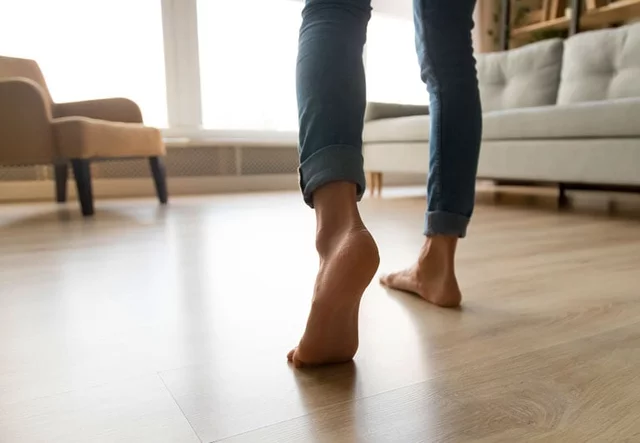
If you’re living with vision loss due to diabetes-related macular edema (DME), you’re probably making a lot of changes. You’re seeing new doctors, getting additional help managing your blood sugar and undergoing new treatments. It can be lot to handle.
But that’s not all. You’realsolearning how to go about your daily life with a vision impairment. Doing laundry, cooking , taking your medication: It can all be a little harder than it used to be. And it can make home sweet home feel less like a refuge and more like an obstacle course.
Luckily, there are lots of little changes you can make to your home to make it more DME-friendly. We talked to ophthalmologist Nicole Bajic, MD, about five different kinds of home modifications that can make navigating life with DME vision loss easier.
Vision loss increases your chances of taking a tumble
. That risk is even higher if you’re also experiencing diabetes-related nerve damage
. That’s why Dr. Bajic says it’s important to assess and address any tripping hazards in your house
. That includes:
Maybe you’re the tidy type. Maybe you’re not. Either way, living with DME-related vision loss is probably going to mean rethinking your organizational system a little bit. But it’s worth the time: Having “a place for everything and everything in its place” will save you a lot of frustration.
Here are a few quick and easy ways to make your stuff easier to find:
There’s a whole wide world of assistive devices out there that you may not already be aware of. Some of them are high tech, while others (like the humble magnifying glass) have been around for centuries. Check out the following items to see which, if any, would make your life easier!
If you’re experiencing vision loss as a result of DME, it’s time to ditch the mood lighting. Overhead and natural light are especially helpful for navigating your home. You can also get magnifying devices that include lights — they’re especially helpful when you’re doing close work, like reading or knitting.
If you’ve been looking for a reason to redecorate, you’ve got one now! Bright colors and high-contrast home décor can be incredibly helpful for keeping you oriented. Here are a few examples:
Right now you might be feeling a bit overwhelmed by the size of the DME honey-do list we’ve compiled. It’s totally understandable. Vision loss is tough enough as it is— changing your house on top of that is a lot to ask! But before you get too discouraged, let’s take a step back.
Our list of DME-friendly home modifications is long because different people experience different degrees of vision impairment as a result of the condition.
“The home modifications you need to make really depend on your current functional status,” Dr. Bajic explains. In other words, not everything on this list is going to be necessary for your particular situation. If you’re dealing with mild vision impairment, a marshmallow ball cane is overkill. And if you’re nearing total vision loss, colorful labels aren’t going to work.
DME is also a progressive condition: It can change over time, for better or for worse. That means it’s OK to take a piecemeal approach to home modification. You can only do what you can do — and something is better than nothing.
It’s also important to remember that you aren’t alone in this journey. If you’re not sure what home modifications are right for you, speak to your primary care provider, your ophthalmologist and — if you have one — your low-vision specialist.
“A lot of people are really resistant to the idea of going to a low-vision specialist because they think a person needs to be legally blind to take that step.” Dr. Bajic says. “But that’s not true. I think it’s very valuable for anybody with significant vision loss — especially if you’re agreeable to your provider’s suggestions.”
A low-vision specialist can help you figure out what devices and behavior changes will improve your daily life. If you don’t have access to a low-vision specialist, you can also get tips and tricks from support groups, online forums and organizations like Living Well With Low Vision.
If you’re worried about how you’re going to pay for home modifications, consider applying for a housing adaptation grant or loan. There are also plenty of nonprofit and volunteer groups that help people living with vision loss make home renovations. And while it might not always be easy to ask, your friends, family, caregivers and community may also be able to help.
DME vision loss can make it hard to feel safe in your space. But modifying your home to fit your needs won’t just make it easier to go about your day-to-day activities: It will also help you regain your sense of control and independence. That’s work worth doing.